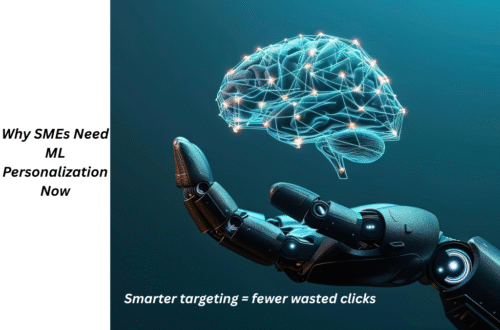
How Effective is the Use of AI and Machine Learning in E-Commerce
Well, the most effective use of AI and ML in the field of e-commerce is to get insights into customer behavior to create personalized experiences.
With the technology that’s changing marketing, businesses, and customer support, the range of operations has now become faster and easier. The question is, how effective is it to leverage AI and ML in e-commerce?
It supports a variety of tasks including the categorization of goods, combining duplicates on one card, listing recommendations, and placement of goods in third-party markets. Beyond just improving your website performance, it also optimizes email open and click-through rates automates marketing campaigns, and identifies improvement areas.
How Does AI Work and What are its Benefits?
When ChatGPT appeared, it changed the future of customer service. It showed that artificial intelligence has reached a point where it can handle customer service better than humans do.
The shift of the post-pandemic world towards online shopping has made e-commerce one of the leading adopters of AI. Today’s customers want to receive personalized experiences while shopping online and when the retailer successfully delivers that experience it results in a 40% increase in revenue.
Now AI made it easier with personalized product recommendations. Retailers are now using Al and ML for data analytics, personalization, and recommendation engines. The AI distills data from the customer’s previous behavior data such as his searches, clicks, and purchases, and then uses this filtered information as an algorithm to recommend relevant items to that customer.

Like personalized product recommendations, AI enables retailers to understand their customer’s intent behind the search query. Since artificial intelligence studies individual preferences, it makes more accurate recommendations and hyper-targets a retailer’s biggest nightmare of abandoned carts.
It pulls data from sources like demographics, customer behavior, transaction, and e-commerce data and applies data mining, optimization algorithms, machine learning, and neural networks to identify a customer’s pattern and make predictions.
How Does Machine Learning Work and What are its Benefits?
Just like artificial intelligence, machine learning recognizes consumer’s preferences and recommends relevant products. The main goal of ML is to simplify the buying process of a customer using his location, age, gender, and shopping habits.
The integration of machine learning in e-commerce results in significant progress in supply chain management. The companies use chatbots and other virtual assistants from artificial intelligence and machine learning to offer their online shoppers 24/7 support.
It’s the job of machine learning to keep track of dynamic prices. It keeps a check on all products and the constant change in their prices. It then determines the best prices for both seller and consumer.
AR and VR Tools
Augmented Reality is great for visualization and storytelling of things that physically do not exist. While Virtual Realit creates a seamless digital environment with the effect of complete immersion.
Machine learning takes in the power of mobile devices and integrates this digital content into your physical world revolutionizing the way we shop. The immersive experience of AR engages the customer and drives more sales.
Allows Churn Prediction by Generating Models
Machine learning generates churn prediction models and allows us to react in time while keeping the clients who are about to leave. Companies that are actively using predictive analysis use machine learning to prevent churn and unpredictable circumstances like those that happened in the 2020 pandemic that changed the market situations.
Image Recognition Technology
Where the wide world of the internet made it difficult to decide what to buy, machine learning technology recognizes the picture of your desired object and offers the buyer matching. This system also helps the seller to speed up and facilitate the ad publishing process.

Benefits of Leveraging Al and ML in E-Commerce
Now let’s discuss the outstanding role of artificial intelligence and machine learning in the online retail industry.
Personalization:
The implementation of these technologies positively impacts the shopping experience of a customer as they can detect behavioral patterns and create personalized discount offers and targeted ads.
Interactivity and Logistics:
This feature boosts customer support and sales and helps retailers implement interactive solutions like contextual shopping features. AI on the other hand simplifies the monitoring of your product delivery and forecasts the demand for different products.
Security:
In the security aspect of e-commerce, machine learning enables the detection of fraudulent behavior, and safe transactions, and protects the data of clients.
How to Adopt AI and Machine Learning in Your E-commerce Business
First, you need to know your goals and what your business is trying to achieve with the integration of artificial intelligence and machine learning. Is it for better-targeted product recommendations? More Targeted Ads, better customer experience, or automate the customer service chatbot.
After that, evaluate the time and money you can invest in AI and machine learning development and testing to get faster results. Then talk to vendors and evaluate their approach to implement these solutions. You need someone who understands the unique challenges of your business and suggests the required artificial intelligence and ML solutions.
Conclusion:
AI and ML are your partners in the future of e-commerce and help your business in many ways. From enhancing customer experience to preventing fraud and ensuring product authenticity, these technologies help you to stay ahead of your competitors. So it’s time to adopt this solution.






3 Comments
Pingback:
Pingback:
Pingback: